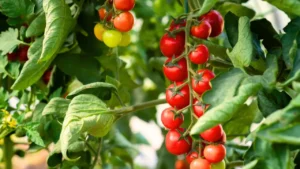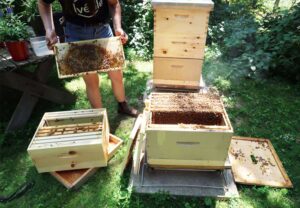
crab.jpg
Crab
Definition:
Crab refers to various species of decapod crustaceans belonging to the infraorder Brachyura, characterized by their broad, flattened bodies, ten walking legs, and distinctive sideways walking locomotion. Crab species include blue crabs (Callinectes sapidus), Dungeness crabs (Metacarcinus magister), and others, prized for their sweet meat, delicate flavors, and culinary versatility in seafood dishes and culinary preparations worldwide.
Description:
Crabs are highly valued food sources and seafood commodities, commonly harvested from marine, brackish, or freshwater environments through commercial fishing, aquaculture farming, or wild capture methods. Crabs play significant roles in global seafood markets, culinary traditions, and gastronomic cultures, featuring prominently in various cuisines, recipes, and culinary styles as popular crab varieties and premium shellfish products.
Fall off the barn roof and busted your keister? Life on the farm or ranch can be tough on the bum. Need a break? Laugh it off at FarmerCowboy.com, the #1 farm humor site. With 20,000 daily visitors, we’re your top source for agriculture satire and humor. Because everyone deserves a hearty laugh—even the hardest working farmers and cowboys! Join us and turn those long days into fun tales at FarmerCowboy.com.
Characteristics of Crab:
Crabs possess various characteristics, including:
- Decapod Anatomy: Crabs exhibit decapod anatomy, with ten walking legs, including four pairs of walking legs and one pair of chelae (claws), segmented bodies, and distinct cephalothoraxes and abdomens, adapted for locomotion, feeding, and defense in aquatic environments, enabling crabs to navigate diverse habitats and substrate types.
- Sideways Movement: Crabs are known for their distinctive sideways walking locomotion, utilizing their jointed legs and lateral appendages to move laterally or crabwise along the seafloor, sandy beaches, or intertidal zones, employing a scuttling gait and rapid movements to evade predators, capture prey, or escape danger.
- Carapace Protection: Crabs have hard, calcified exoskeletons, known as carapaces, covering their cephalothoraxes and abdomens, providing structural support, camouflage, and defense mechanisms against predators, physical impacts, and environmental stressors, with variations in carapace shapes, sizes, and colors among crab species.
- Feeding Habits: Crabs are omnivorous or opportunistic feeders, consuming a variety of food items, including algae, detritus, mollusks, crustaceans, and small fish, using their chelae, mouthparts, and appendages to capture, crush, and ingest prey items in aquatic environments, exhibiting feeding behaviors such as scavenging, predation, and herbivory.
Uses of Crab:
Crabs serve various purposes in culinary, commercial, and cultural contexts, including:
- Culinary Delicacy: Crabs are esteemed as premium shellfish delicacies, enjoyed in a variety of culinary preparations, such as crab cakes, crab bisque, crab boil, or crab sushi, featuring delicate flavors, tender textures, and culinary versatility in seafood dishes and culinary menus worldwide.
- Commercial Fisheries: Crabs support lucrative commercial fisheries and seafood industries worldwide, supplying crab products, seafood exports, and aquaculture inputs to global markets, contributing to economic development, employment opportunities, and trade relations in crab-producing countries and coastal regions.
- Aquaculture Production: Crabs are commercially farmed and cultivated in aquaculture operations, utilizing pond culture, tank culture, or raceway culture systems to rear crab species for food production, aquaculture markets, or value-added product industries, supporting aquaculture enterprises, employment opportunities, and economic growth in crab farming regions.
Conclusion:
Crabs are iconic crustacean species, valued for their culinary appeal, economic importance, and cultural significance in seafood consumption and gastronomic experiences worldwide. By promoting sustainable fisheries management, aquaculture practices, and seafood supply chains, stakeholders in the crab industry can ensure the long-term sustainability, resilience, and prosperity of crab resources for present and future generations.
References:
- Phillips, B. F., & Kittaka, J. (Eds.). (2019). Advances in Crab Aquaculture Management. CRC Press.
- Dall, W., & Smith, D. M. (Eds.). (2018). Biology of Crabs. Academic Press.
Originally posted 2016-03-14 11:07:54.
Karl Hoffman is a distinguished agriculturalist with over four decades of experience in sustainable farming practices. He holds a Ph.D. in Agronomy from Cornell University and has made significant contributions as a professor at Iowa State University. Hoffman’s groundbreaking research on integrated pest management and soil health has revolutionized modern agriculture. As a respected farm journalist, his column “Field Notes with Karl Hoffman” and his blog “The Modern Farmer” provide insightful, practical advice to a global audience. Hoffman’s work with the USDA and the United Nations FAO has enhanced food security worldwide. His awards include the USDA’s Distinguished Service Award and the World Food Prize, reflecting his profound impact on agriculture and sustainability.






